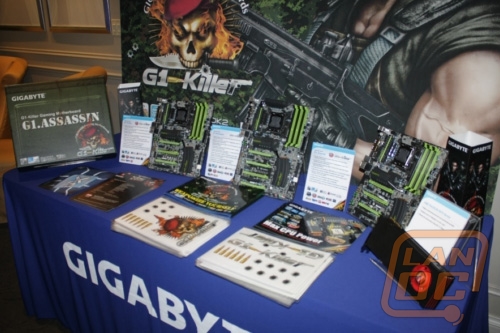 After Gigabyte's Press Conference the day before, we were really looking forward to seeing the new gaming series motherboards in person. Though an entire suite was dedicated to showing off the new G1 Killer line, another room directly across the hall held a much wider array of products coming in the new year.
After Gigabyte's Press Conference the day before, we were really looking forward to seeing the new gaming series motherboards in person. Though an entire suite was dedicated to showing off the new G1 Killer line, another room directly across the hall held a much wider array of products coming in the new year.
Gigabyte's main room was full of motherboards, understandable considering the recent Sandy Bridge launch. Wes and I were first led to a table that held the P67 line-up, including the UD-7, UD-5, and UD-4.
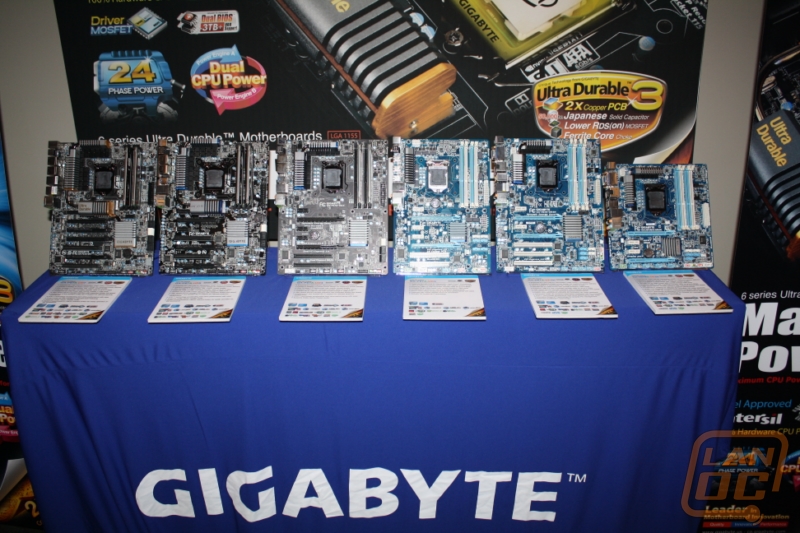
The UD-7 corrects one of our complaints from the UD-4, supporting video card set-ups higher than two, as well as 10 USB 3.0 and 24 power-phasing. The UD-4 has a 20 power phases and 8 USB 3.0, and offers a more mid-range option for consumers.
Though most of the G1 Killer series was on display in the neighboring room, Gigabyte did have a few boutique builds featuring the boards showcased on their floor.
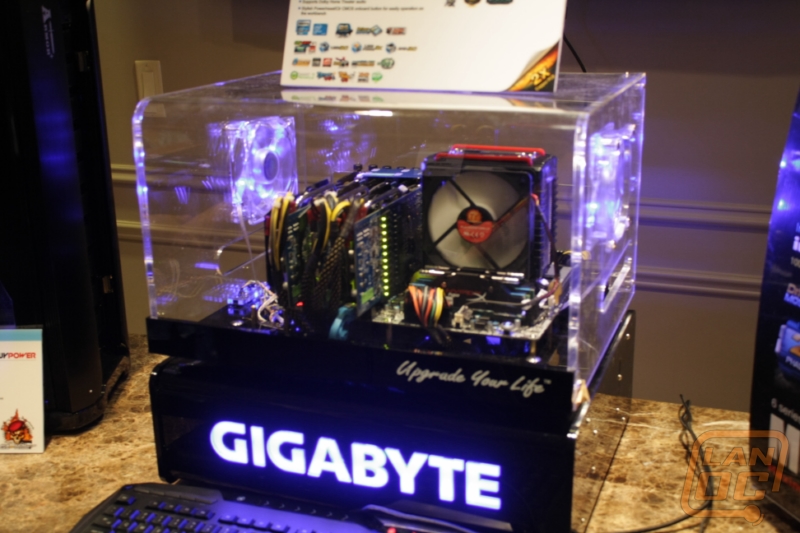
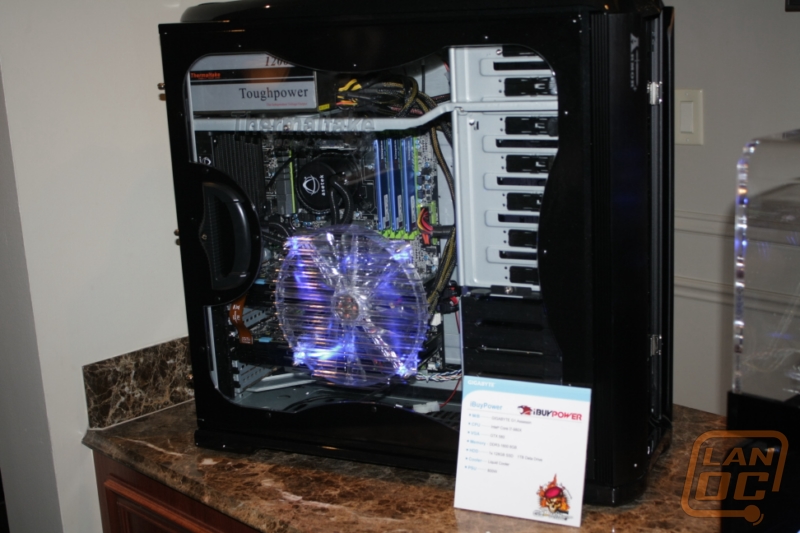
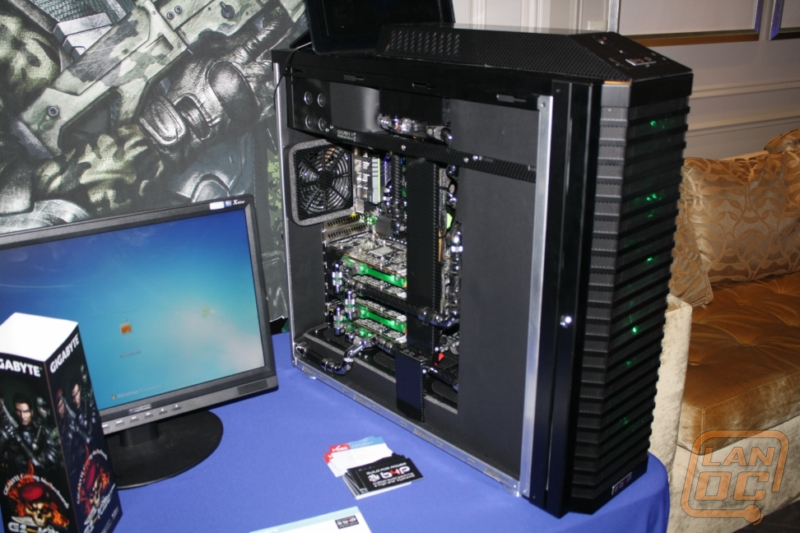
On the opposing side of the room sat a table containing gaming peripherals and Gigabyte's recent dip into the tablet market. The T1000-5, which is a successor the the convertible tablet models that features a resistive touch screen with a dual-core processor.
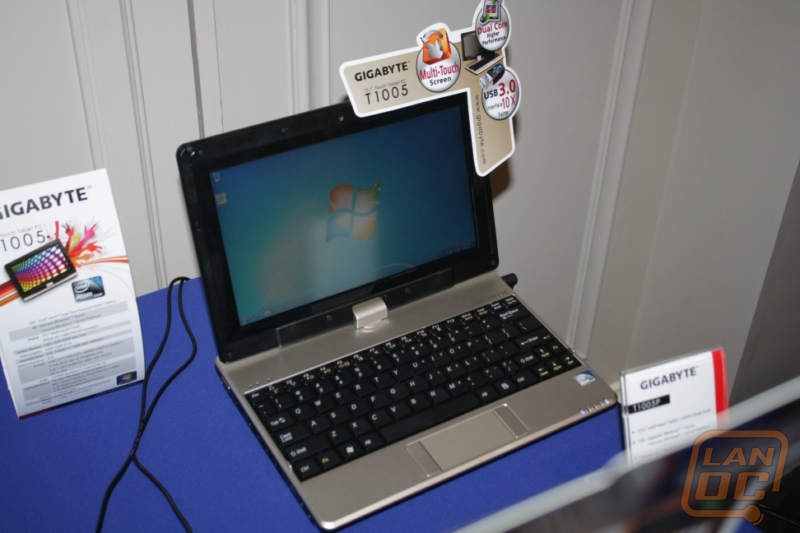
The T1125, which is a very unique notebook computer running on core i3/i5, featuring a rotating screen and docking station system that comes standard with an ODD, as opposed to built in to the notebook itself. When plugged in to another computer, this can be used as a second, touch-screen montior complimenting your set-up even with HDMI.
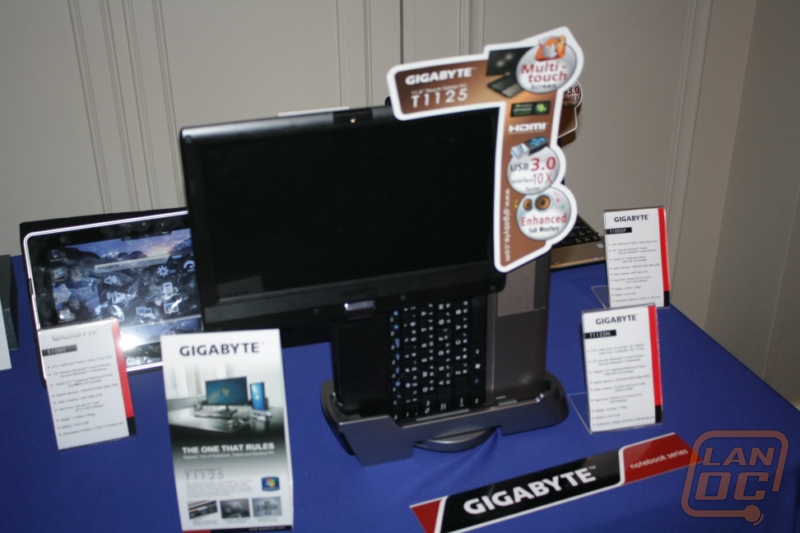
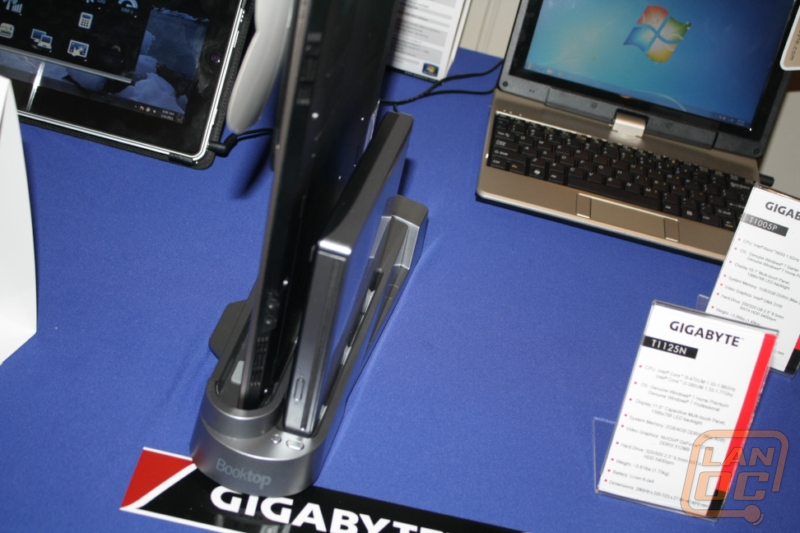
The Slate PC, just announced the day before, is equipped with a dual-core processor and 10.1 touchscreen. An app menu is also built-in allowing users to easily choose what sort of function, work or play, they are looking for.
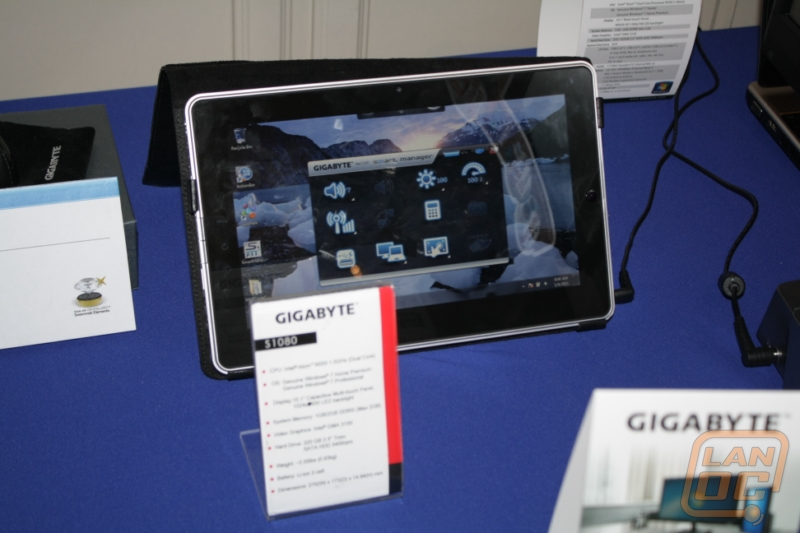
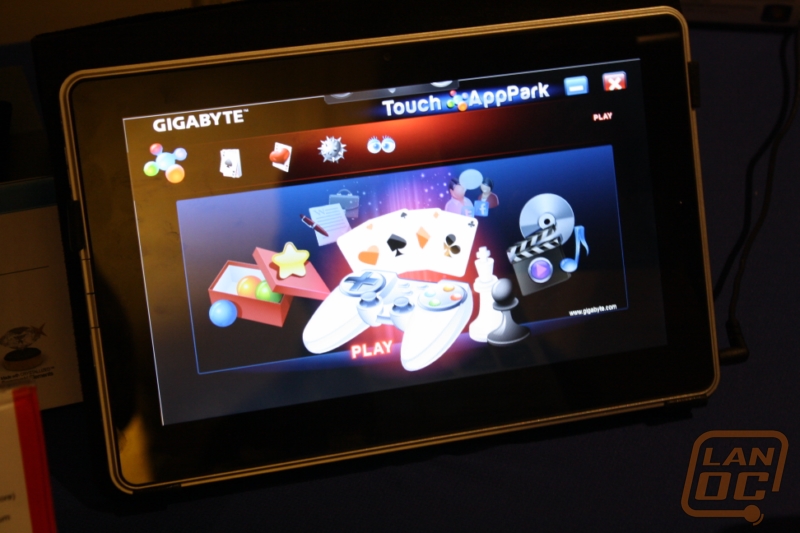
Across the hall was a suite dedicated to the new gaming-orientated motherboards, the G1 Killer series. Hinted at leading up to and finally announced at CES 2011, Gigabyte had been researching and waiting for the right time to release such a project. Three key requirements were identified: appearance, audio, and networking. The first is addressed with an FPS-themed board featuring gun barrel and ammo clip replicas for bridge heatsinks, as well as the consistent color scheme throughout the headers. The second, audio, is in the care of the Creative X5-20K2 built directly onto the board. Finally, networking is no longer an issue with the inclusion of the Killer 2100. If you recall the Killer 2100 dedicated network card, Bigfoot Networks optimized gaming performance by prioritizing those information packets sent by the game above those not related to it (simply put, of course). BFN has managed to take the exact same hardware fom that card and put it on the new G1 series.
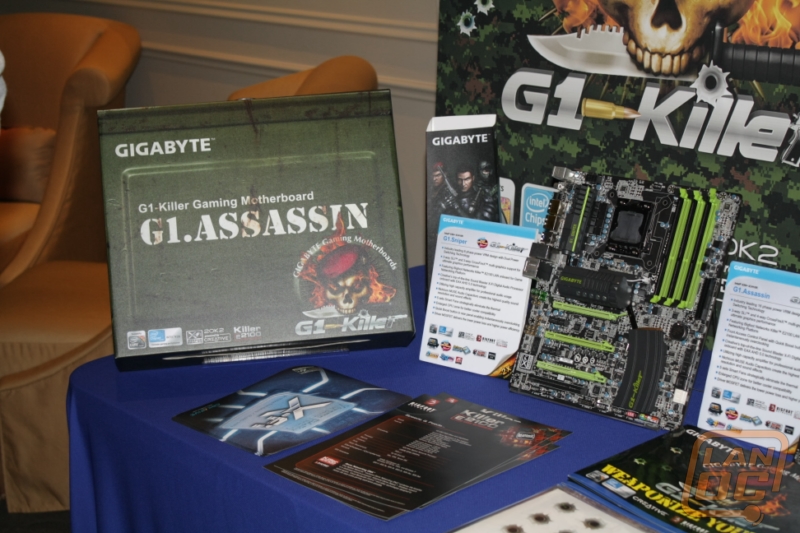
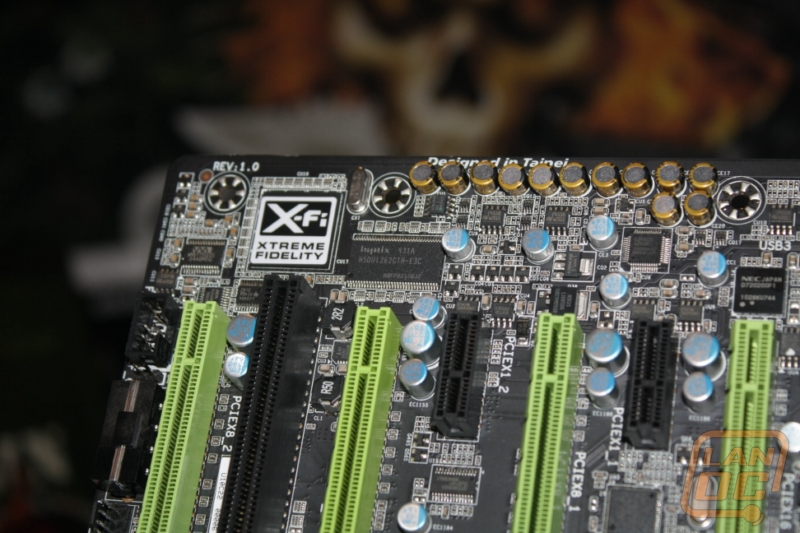
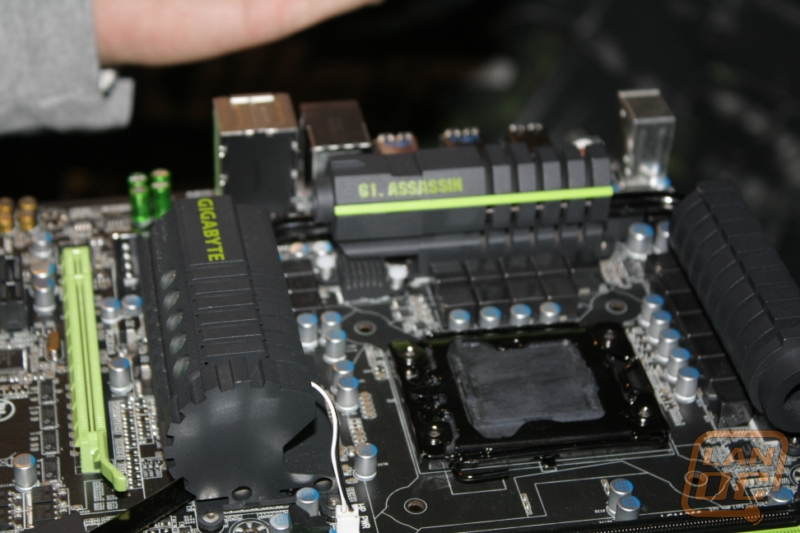
All three boards, the high-end Assassin, mid-range Sniper, and entry-level Guerilla were on display for us to get a closer look at. Sean McCann, Senior Product Marketing Manager at Bigfoot Networks running a side-by-side benchmark using the Killer board equipped with the embedded NIC against a standard, showing incredible differences.

The UD-7 corrects one of our complaints from the UD-4, supporting video card set-ups higher than two, as well as 10 USB 3.0 and 24 power-phasing. The UD-4 has a 20 power phases and 8 USB 3.0, and offers a more mid-range option for consumers.
Though most of the G1 Killer series was on display in the neighboring room, Gigabyte did have a few boutique builds featuring the boards showcased on their floor.



On the opposing side of the room sat a table containing gaming peripherals and Gigabyte's recent dip into the tablet market. The T1000-5, which is a successor the the convertible tablet models that features a resistive touch screen with a dual-core processor.

The T1125, which is a very unique notebook computer running on core i3/i5, featuring a rotating screen and docking station system that comes standard with an ODD, as opposed to built in to the notebook itself. When plugged in to another computer, this can be used as a second, touch-screen montior complimenting your set-up even with HDMI.


The Slate PC, just announced the day before, is equipped with a dual-core processor and 10.1 touchscreen. An app menu is also built-in allowing users to easily choose what sort of function, work or play, they are looking for.


Across the hall was a suite dedicated to the new gaming-orientated motherboards, the G1 Killer series. Hinted at leading up to and finally announced at CES 2011, Gigabyte had been researching and waiting for the right time to release such a project. Three key requirements were identified: appearance, audio, and networking. The first is addressed with an FPS-themed board featuring gun barrel and ammo clip replicas for bridge heatsinks, as well as the consistent color scheme throughout the headers. The second, audio, is in the care of the Creative X5-20K2 built directly onto the board. Finally, networking is no longer an issue with the inclusion of the Killer 2100. If you recall the Killer 2100 dedicated network card, Bigfoot Networks optimized gaming performance by prioritizing those information packets sent by the game above those not related to it (simply put, of course). BFN has managed to take the exact same hardware fom that card and put it on the new G1 series.



All three boards, the high-end Assassin, mid-range Sniper, and entry-level Guerilla were on display for us to get a closer look at. Sean McCann, Senior Product Marketing Manager at Bigfoot Networks running a side-by-side benchmark using the Killer board equipped with the embedded NIC against a standard, showing incredible differences.


